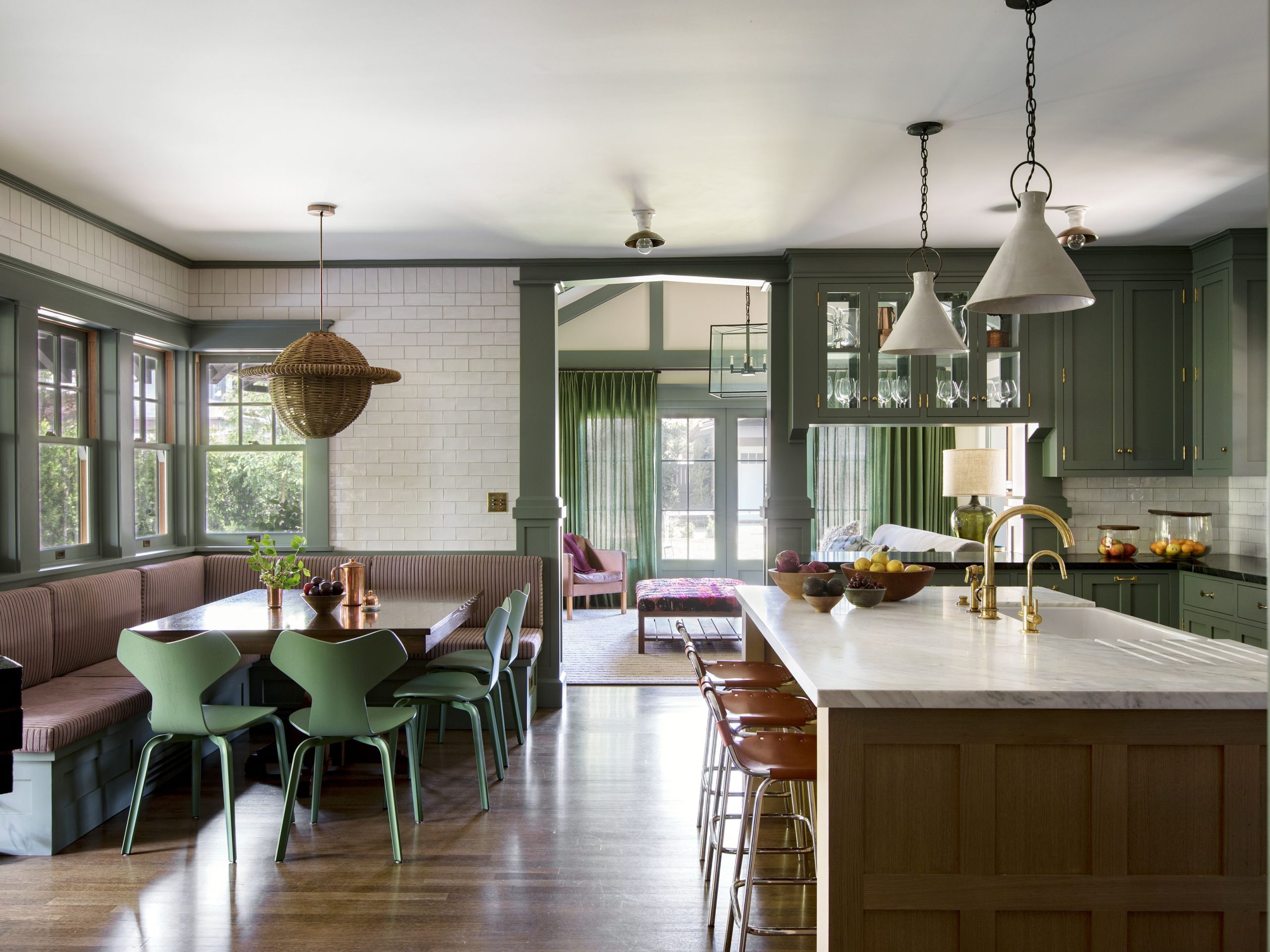Contemporary Craftsman Interior Design: Where Cozy Meets Cool
Step into the inviting embrace of Contemporary Craftsman interior design, where the rustic charm of handcrafted details blends seamlessly with the sleek sophistication of modern aesthetics. This design style masterfully balances the warmth and character of traditional Craftsman homes with a fresh, contemporary vibe, resulting in spaces that are both visually stunning and incredibly livable.
Imagine a home bathed in natural light, where exposed beams and stone fireplaces create a sense of history and permanence. The furniture is carefully chosen for both style and comfort, inviting you to relax and unwind. Warm wood tones, clean lines, and functional spaces define this design style, creating an atmosphere that is both welcoming and visually appealing.
Contemporary Craftsman design celebrates the beauty of natural materials. Rich woods like oak and cherry, rugged stone accents, and sleek leather elements add warmth, personality, and a connection to the natural world. This emphasis on natural materials aligns perfectly with the growing trend of sustainable living, as many Contemporary Craftsman homes incorporate eco-friendly materials and energy-efficient appliances.
What Defines Contemporary Craftsman Style?
While rooted in the traditional Craftsman movement of the early 20th century, Contemporary Craftsman design infuses classic elements with a modern sensibility. Think of it as a stylish evolution, embracing the core principles of craftsmanship, simplicity, and natural materials while incorporating contemporary design elements.
Open floor plans, often found in modern homes, create a sense of spaciousness and flow, while large windows bathe the interiors in natural light. Sleek, minimalist furnishings complement the clean lines of the architecture, and a muted color palette of earthy tones, grays, blues, and natural hues creates a serene and calming atmosphere.
Here’s a closer look at the key differences between Traditional and Contemporary Craftsman styles:
| Feature | Traditional Craftsman | Contemporary Craftsman |
|---|---|---|
| Overall Vibe | Cozy, homey, traditional | Warm, inviting, modern |
| Materials | Wood, stone, leather | Wood, stone, leather, metal, glass |
| Colors | Earthy tones, browns, greens | Earthy tones, grays, blues, natural hues |
| Layout | Defined rooms | Often open floor plans |
| Decor | Handcrafted furniture, rich textiles | Mix of handcrafted and modern pieces, natural textures |
| Lighting | Natural light, warm fixtures | Abundant natural light, statement lighting |
The beauty of Contemporary Craftsman lies in its ability to bridge the gap between classic and contemporary, resulting in a timeless yet current aesthetic that appeals to a wide range of tastes.
Creating Warmth: Natural Materials and Textures in Contemporary Craftsman Design
One of the defining characteristics of Contemporary Craftsman design is its emphasis on natural materials and textures. From warm wood floors to rough-hewn stone fireplaces and plush textiles, every element is carefully chosen to create a sensory experience that evokes a sense of comfort and connection to the natural world.
Imagine running your hand along a smooth, hand-planed table or sinking your feet into a plush wool rug. These tactile experiences elevate the design beyond the visual, creating a sense of warmth and intimacy that is both inviting and grounding.
Contemporary Craftsman design seamlessly blends these natural elements with modern sensibilities. Exposed beams and vaulted ceilings, reminiscent of traditional Craftsman architecture, are juxtaposed with sleek modern furniture and open floor plans, creating a harmonious balance between old and new.
Balancing Openness and Functionality: Layout and Space Planning
Creating a harmonious and functional living space requires a keen understanding of layout and space planning. In Contemporary Craftsman design, the goal is to achieve a balance between openness and functionality, ensuring that the space is both aesthetically pleasing and practical for everyday living.
Open floor plans, a hallmark of contemporary design, promote a sense of spaciousness and flow, allowing natural light to permeate throughout the home. However, it’s important to define distinct zones within these open spaces to create a sense of purpose and organization.
Carefully placed furniture can delineate conversation areas, dining spaces, or work zones, while maintaining an overall sense of openness. Furniture choices themselves play a crucial role in maximizing functionality. Opt for pieces with built-in storage, such as ottomans with hidden compartments or coffee tables with shelves, to minimize clutter and keep essentials within easy reach.
When planning your layout, consider the flow of movement throughout the space. Ensure there are clear pathways between different areas and avoid creating bottlenecks or cramped spaces. By thoughtfully addressing both openness and functionality, you can create a Contemporary Craftsman home that is both visually stunning and a joy to live in.
Ready to explore other inspiring design styles? Explore colonial revival interior design, a popular architectural style inspired by colonial architecture. Discover the vibrant fusion of Mexican heritage and contemporary elegance in contemporary Mexican interior design. Finally, immerse yourself in the organic and geometric forms of Frank Lloyd Wright’s interior style and design.
- Greenhouse Storage Shed Combos: Your Guide to Combining Growing and Storage - April 21, 2025
- Greenhouse Shed Combo: Design, Build & Grow Year-Round - April 21, 2025
- Gingham vs. Plaid: What’s the Difference? A Complete Guide - April 21, 2025










